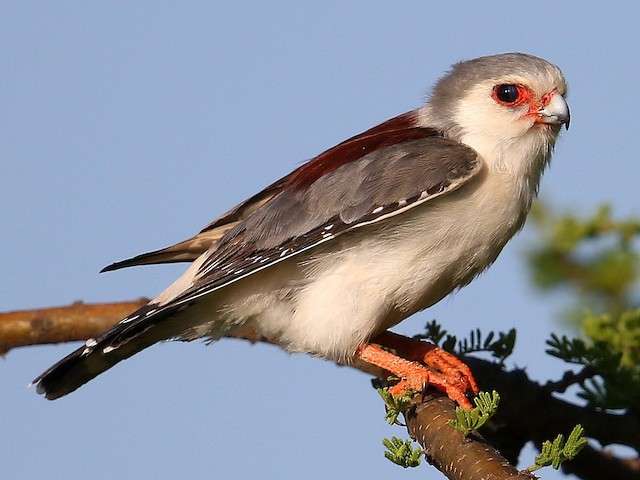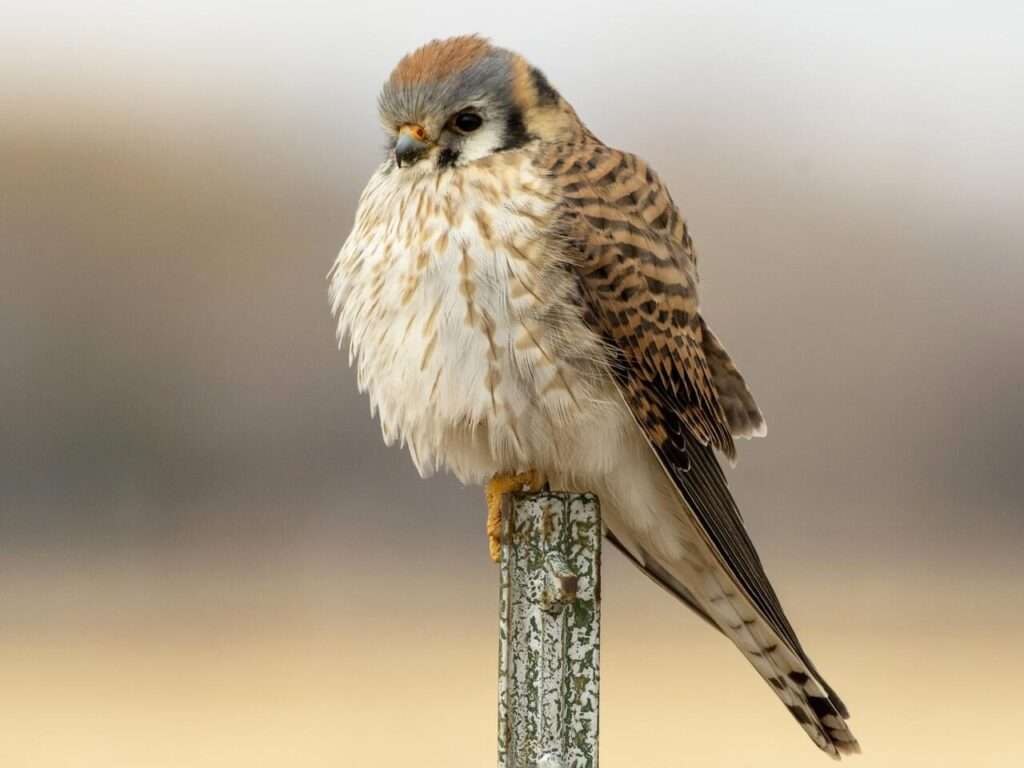
Description
Life span: 6- 8 years
White can be seen on adult African pygmy falcons’ cheeks, breasts, and abdomens. Males have grey backs, while females have backs that are darker and more chestnut in hue. White spots are present on the tail feathers and the back of the neck. African pygmy falcons can be identified by their brown eyes and bright orange legs. While the beak itself is grey, the base of the beak is orange. African pygmy falcons are white when they first hatch, with closed eyelids. The eyes will often open in two to three days. Young have reddish-brown backs and necks and paler feet than adults. The breasts, faces, and abdomens of juveniles are all white. In roughly a year, the species’ individuals will reach adulthood.

Native Region/Habitat
The African pygmy falcon can be found in two regions of the continent: Namibia, Botswana, Angola, and Cape Province in southwest Africa, and Somalia, Sudan, Uganda, Ethiopia, and Tanzania in northeastern Africa. Normally, this species does not migrate. The southern African range of African pygmy falcons is shared with social weavers, and the northern African area is shared with white-headed buffalo weavers.
Behavior
Being sociable animals, African pygmy falcons depend on one or more partners to reproduce and care for their young. They favour regions with few trees for perching and little vegetation. Open spaces are preferred for hunting. Being sedentary animals, they live most of their lives in one place. These falcons typically hunt in the morning and evening when it is cooler outside and they can find cover from the heat of the day. Although they occasionally prey on smaller birds in flight, African pygmy falcons prefer to target small terrestrial creatures. These falcons fly by rapidly flapping their wings and occasionally thrusting their wings downward.
The principal means of communication between members of this species are the songs sung during mating, which are used to entice possible partners. During the courtship ritual, which involves some body communication, the female displays her availability by squatting and lifting her tail feathers. It is possible to read the male’s movements during wooing as a type of communication. A keen sense of sight is possessed by African pygmy falcons, as it is by the majority of nocturnal birds of prey.
As a pet/In captivity
Due to their great intelligence and energy, African pygmy falcons are challenging to care for as pets because they require mental stimulation in addition to food and water. They need a special diet that cannot be supplied at home. Their health quickly deteriorates and they become more prone to infection if they are given the wrong kind of meat. These raptors must continue to soar freely in captivity despite their everyday habit of flying freely. If they are not able to fly without restriction, they will experience tension and depression. They need more room than a cage can offer. A big cage called an aviary must often be purchased, and they are rather expensive.
Table





